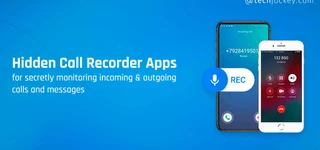Smishing Explained: How to Spot and Prevent SMS Phishing Attacks

We make use of cell phones to do almost everything we do today, be it checking up on our loved ones or shopping for new stuff. However, this comfort comes at a cost, for these smartphones, as smart as they claim to be, are vulnerable to a host of cyberattacks that can put our personal and professional details at risk. One such threat is smishing.
For the unversed, smishing is when scammers make use of text messages to trick you into revealing sensitive information or making money transfers. They do so by using disposable numbers to send CTA messages, which, if acted upon, can give the attacker access to your personal information, financial accounts, or even your contact list.
However, there are various ways to guard yourself against smishing attacks. You can always verify the senders, review your accounts, make certain you never click on suspicious links, or enable endpoint security software or mobile security software on your device.
In this blog, we will ponder the meaning of smishing and how it works to shed light on the sundry ways you can protect yourself from falling prey to it, one tactic at a time.
What is the Meaning of Smishing?
The meaning of smishing is derived from the amalgam of terms like SMS and phishing. Accordingly, smishing is a type of phishing attack where an attacker, with help from text messages or messaging apps, tricks people into disclosing sensitive details, downloading malware, or transferring money.
Contrary to traditional email-based phishing, smishing takes advantage of the trust and urgency people ascribe to text messages. The attackers often impersonate brands or trusted authorities to make their messages look genuine and evade detection. With smartphones used in huge numbers across the globe, smishing attacks are a real threat to all, both businesses and individuals alike.
How Does Smishing Work?
Smishing attacks typically follow this pattern…
- Target Selection: As a first step, attackers search for active phone numbers to target. They make use of leaked databases, social media, or random number generators online to gather this information and prepare a list of potential targets.
- Crafting the Message: They then impersonate a trusted entity and, from their perspective, create a convincing message with a compelling call to action.
- Delivery: This message is then sent to their targets via SMS or a messaging app.
- Exploitation: If the targets fall prey to the message and click the link, they are routed to a fake website, asked to download malware, or fill out sensitive information.
- Harvesting the Data: If the victims end up installing the malware or providing private details, the attackers get access to their personal information, financial accounts, or even contact lists.
- Covering Tracks: Scammers make use of disposable numbers and encrypted messaging to carry out smishing. This, so they remain untraceable, come what may.
Types of Smishing Attacks
Smishing attacks are carried out in various ways, depending on the emotions and situations involved, so everything can be taken advantage of in one way or another. Some of their most common types are listed below for your convenience and understanding…
1. Account Verification Scams
For account verification scams, attackers act as trusted businesses like banks, email providers, or online services and send warning messages for unauthorized activity, asking you to verify your account. These messages inculcate a link that, if clicked, takes you to a fake website programmed to steal your credentials.
2. Prize or Lottery Scams
These scams include texts that claim you have won a prize or lottery and ask you to fill out your personal details, pay a small fee, or click a link to claim it. Those who respond to such texts get their money or private data stolen almost instantaneously.

SentinelOne
Starting Price
Price on Request
3. Tech Support Scams
For tech support scams, as the name suggests, attackers tend to impersonate support teams and warn smartphone users of a virus or problem with their device or account. To resolve the same, they ask you to give a call on a number or install an app, which, if done, gives them remote access to your device or installs malware into your system.
4. Bank Fraud Alerts
For bank frauds, attackers pose as your bank to warn you about unauthorized transactions or suspicious activity. You are then required to click a link or call a number, both of which are controlled by the attackers, to verify your transactions. Those who comply lose their login details, compromising their accounts.

NeuShield Data Sentinel
Starting Price
Price on Request
5. Tax Scams
These scams take place during the tax season. To successfully carry them out, scammers impersonate tax agencies, promising refunds or threatening penalties for unpaid taxes. To avail/evade, people are asked to provide their personal or financial details.
6. Service Cancellation Scams
As the name implies, these scams work by warning users of a subscription or service cancellation owing to payment issues. They are urged to click a link to resolve the issue, which leads them to a phishing page, where, if they end up entering their payment details, their financial data gets exposed.

Singularity Complete
Starting Price
$ 159.99
7. Malicious App Downloads
These include random promotional messages that ask you to download a useful or entertaining app. As soon as you click the link, malware gets installed in your system, leading to data theft. It can also be used to spy on you or lock your files for ransom.
8. Gift Smishing
These smishing scams include fake promises of free services or products made on the part of the attackers under the guise of famous retailers. Since we, as humans, tend to fall for free stuff, it acts on our sense of excitement and urgency, making us reveal sensitive info.

Avast Essential Business Security
Starting Price
₹ 2604.00 excl. GST
9. Invoice or Order Confirmation Smishing
Smartphone users often receive false purchase confirmations or billing invoices that ask them to review or cancel their order. When acted upon, mostly due to fear of being charged unnecessarily, these take them to a phishing site, causing monetary harm.
10. Emergency Scams
Emergency scams take advantage of the fear and urgency with which people treat matters involving family. To deliver them, attackers send fake messages, such as that of a family member being in an accident, and ask people to call a premium-rate number to get more information. Those who fall prey to them incur high charges or get manipulated into sharing personal information.
Phishing, Vishing, and Smishing: What’s the Difference?
Though phishing, vishing, and smishing end up sounding similar to many, the three cyberattacks significantly differ, especially in how they get delivered. Some of the key differences between them are listed below for your understanding…
| Aspect | Phishing | Vishing | Smishing |
|---|---|---|---|
| Mode of Delivery | Email (sometimes messaging apps or fake websites) | Voice calls or voicemails | SMS/text messages or messaging apps |
| Attack Method | Fake emails with links or attachments | Impersonation via live or automated phone calls | Fraudulent texts with links or CTAs |
| Main Target | Email users (work or personal) | Anyone reachable by phone | Mobile phone users |
| Typical Examples | Account locked email from your account with a fake login page | Account details verification call from someone claiming to be your bank representative | Bank alert text with a link to a fake website |
Suggested Read: Phishing vs Vishing vs Smishing
How to Protect Yourself from Smishing
While things are easier said than done, one can substantially minimize their chances of falling prey to smishing attacks by following these best practices…
1. Be Skeptical of Unsolicited Messages
Needless to say, one should exercise caution while dealing with text messages received from unknown numbers. You should not interact with them even if they appear to come from someone known or a reputable company. Remember that legitimate organizations don’t ask for sensitive details via SMS.
2. Never Click Suspicious Links
Links or attachments received from unknown numbers should be ignored at all costs. If you happen to receive a link in a text message, don’t click on it; instead, go to the official website by manually typing the address to check the legitimacy of the link in question. This will guard you against smishing attacks of any sort

Singularity Cloud
Starting Price
Price on Request
3. Verify the Sender
Carefully examine any and every message claiming to be from your bank, place of employment, or government authorities. Do not make use of the contact details mentioned therein to get in touch with the listed organizations.
Instead, contact them directly via the phone numbers available on their official websites. For personal contacts, try and call or message the people in question using a different channel to confirm the request.
Suggested Read: Best Antivirus Software Solutions to Protect Your Business in 2019
4. Use Mobile Security Software
You should install a reliable mobile security software on your device. For these security solutions possess the ability to detect and obstruct all forms of malicious content, including phishing attempts and smishing attacks as well as their related malware. Your security software should also be set to automatic updates, so it keeps you guarded against new security threats.

ThreatCop
Starting Price
Price on Request
5. Enable Endpoint Security Software
Businesses should enable endpoint security software solutions on every device, from smartphones to tablets, to watch for and stop potential threats from causing damage. Endpoint security technology helps organizations maintain security standards across their devices by sending timely alerts to IT teams as and when potential breaches occur.
6. Leverage Mobile Device Management (MDM) Software
Organizations should also make use of mobile device management (MDM) software to enhance their devices’ security and ensure that only trusted apps are installed. With help from MDM solutions, businesses gain the capability to track device compliance and immediately address emerging risks.

Avast Ultimate Business Security
Starting Price
₹ 3899.00 excl. GST
7. Educate Yourself & Others
To protect ourselves against smishing attacks, we need to stay informed about their latest delivery techniques while actively participating in cybersecurity training programs.
This information should be passed on to our co-workers, nearest family members, and friends, so nobody ends up falling prey to these attacks. If more and more people are made aware of smishing and the various ways in which it gets delivered, attackers are bound to fail.
8. Report & Block
If you are receiving suspicious messages, report them to your mobile carrier and official authorities. Many carriers offer a certain number for users to forward their spam messages to. You should also block the sender because blocking prevents additional contact and safeguards others from facing the same type of attack.

Sophos Central
Starting Price
Price on Request
9. Keep Your Device Updated
You should keep your smartphones and all the apps installed on them updated at all times. In fact, enabling automatic updates is the best way to protect yourself from cyber threats.
10. Enable Two-Factor Authentication (2FA)
Activate two-factor authentication on all your important accounts. This will add an extra layer of security, warranting a second verification step (such as a code sent to your phone) even if your password is compromised. It prevents unauthorized access, even if you fall for a smishing attempt

Singularity Signal
Starting Price
Price on Request
11. Be Mindful of What You Share Online
Know that attackers create compelling smishing messages by collecting information from our social media platforms and visible profiles. So, review your privacy settings continuously and cut down the amount of personal information you expose to public view on your accounts.
12. Regularly Review Your Accounts
Keep a constant check on your bank, credit card, and other sensitive accounts for unauthorized transactions. The sooner a suspicious activity gets detected, the better the damage control.
Conclusion
All in all, smishing is a burgeoning threat that exploits the trust we put in our smartphones. And it is only by staying vigilant, verifying messages, and using cyber security software solutions can we significantly reduce our risk of falling victim to it. So, stay alert, stay informed, and take control of your mobile security to keep smishing at bay.
Yashika Aneja is a Senior Content Writer at Techjockey, with over 5 years of experience in content creation and management. From writing about normal everyday affairs to profound fact-based stories on wide-ranging themes, including environment, technology, education, politics, social media, travel, lifestyle so on and so forth, she... Read more




























